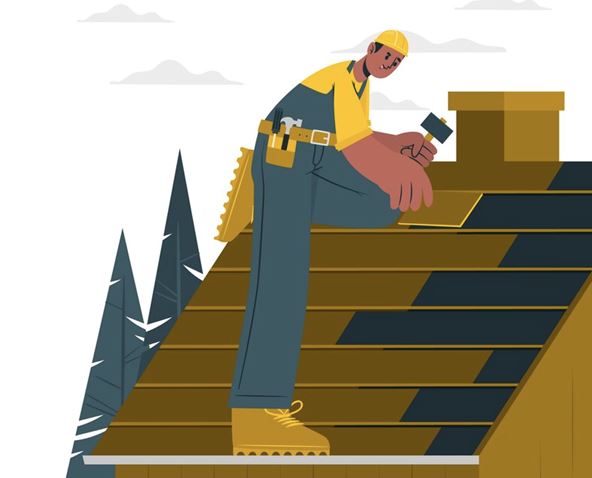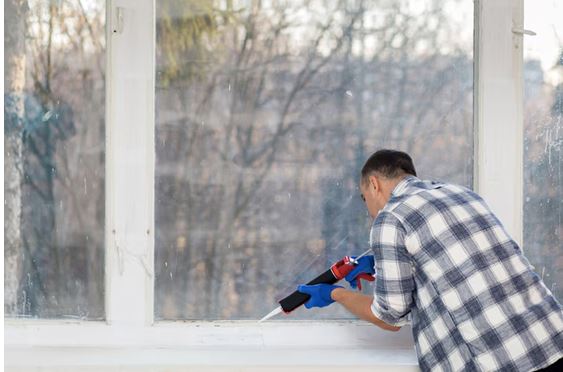
One key aspect to consider when building or renovating your home is how to prepare it for eventualities such as storms.
From tropical cyclones to blizzards, severe weather can threaten homes across the country at different times of the year. While storms cannot always be predicted, there are steps homeowners like you can take before, during, and after storms to keep your families and property safe.
Following these best practices can help reduce risks and better protect a home, regardless of the type of storm that may occur.
Secure Loose Objects in Your Yard
Loose items left outside can become dangerous during high winds. Make sure to anchor anything that isn’t permanently fixed down. This includes trampolines, grills, patio sets, children’s outdoor play equipment, hanging planters, and lawn ornaments.
Whenever possible, use tie-downs, straps, and stakes designed for high winds. Bring potted plants, hanging baskets, and loose garden items like hoses and tools inside or store them securely in a locked shed.
Lastly, don’t forget small things like garbage cans – turn over anything that can collect water.
Inspect Your Roof and Drainage Systems

Check your roof for loose, damaged, or missing shingles and make repairs. Also, inspect vents, chimneys, and attic openings for potential leaks. Clean out gutters and downspouts, removing leaves and debris that could clog them.
Also, make sure downspouts direct water at least 6 feet away from your home’s foundation. Look for any signs of excess moisture in the attic that could indicate larger issues. Unclog roof drains and ensure they are not covered by branches or leaves.
Stock an Emergency Storm Kit
Assemble a portable kit of essential supplies in case you need to shelter in place or evacuate. Include bottled water, non-perishable food like energy bars, canned goods, a manual can opener, a first aid kit, and any necessary medications.
Also, pack flashlights, batteries, battery-powered radios, emergency blankets, multi-purpose tools, personal hygiene items, extra cash, copies of important documents, and season-specific items like a weather radio, rain poncho, or warm clothes.
Keep the kit in an accessible place and rotate supplies as needed.
Develop an Emergency Plan and Communication Method
Sit down with your family and decide where you will take shelter if told to evacuate, such as a community shelter or home of a friend or family member away from risk areas.
Also, designate an out-of-state contact person family members can call to check in. Save emergency contacts in your phone and consider getting a battery-powered charger. Learn about your community’s emergency warning system.
Visit https://en.wikipedia.org/wiki/Survival_kit to learn how to put together an emergency survival kit.
Protect Windows and Doors

Inspect and prepare exterior windows and doors before a storm arrives. Check that caulking and sealing around doors and windows are intact and make any necessary repairs. Then, board up vulnerable areas to protect the home.
You can board exterior windows and glass doors with exterior-grade wood panels. Secure the panels with screws to ensure they will withstand high winds. Brace double-entry doors from the inside with vertical stakes placed on top and bottom for reinforcement. Tape alone does not provide adequate protection.
It is important to get experts to fix your home’s windows and doors. Expert skills ensure that only sturdy window panes and doors are installed. Experienced professionals like Paradise Exteriors will provide top-quality services and use quality products for the installation. This ensures that you are at least sure of the quality of the work being done.
Once exterior openings are secured, close all curtains, blinds, and shades. This helps minimize the possibility of glass breaking from debris or high winds. With windows and doors protected and hazards removed, your home will be better prepared to withstand the storm’s impact.
Know How to Shut Off Utilities
To properly prepare your home, it is important to understand how to shut off critical utilities in an emergency. Gather the necessary tools and ensure all family members know emergency procedures.
Gas, water, and electricity need to be safely controlled in case of storm damage. Teach all household members where the main gas shutoff is located, typically in the basement or side of the house. Show them the main water shutoff as well, often found inside or under the home.
Knowing the location and operation of the circuit breakers is also vital, as these control electricity throughout the home. Take some time before severe weather arrives to locate your specific circuit breakers or fuse box. Label the boxes clearly so they can be easily identified, even in the dark or stressful conditions after a storm.
Assess Damage and Take Safety Precautions After the Storm
Once a storm has passed, it is important to inspect your home thoroughly for any damage or hazards. Watch out for downed or dangling power lines, which should always be avoided and promptly reported to authorities. These lines could still be live with electricity and pose electrocution risks.
Inspect the structure of your home closely as well. Look for revealing signs like cracks in foundations, loose siding, broken windows, or other damaged external areas. These vulnerable spots could potentially allow water intrusion or pest entry if not addressed.
It is also crucial to clean up debris and branches promptly after a storm. Piles of waste left too long run risks of mold growth or infestations taking hold in damaged areas of the home. Prompt clean-up helps to maintain a sanitary environment.
If using generators for power, be sure they are installed properly as fuel-powered units. Only operate generators outdoors away from openings to prevent carbon monoxide poisoning. Thorough post-storm inspections and clean-up help get your home back in order and prevent further issues down the road. Staying safe should always be the top priority in recovery efforts.
Why Preparing Your Home is Worth the Effort
Taking proactive steps to prepare your home for severe storms is essential for safety and preventing further damage. By inspecting your home for issues, securing windows and doors, knowing emergency shut-offs, and cleaning up afterward, you can feel confident your family and property are protected as much as possible.
Write and Win: Participate in Creative writing Contest & International Essay Contest and win fabulous prizes.


